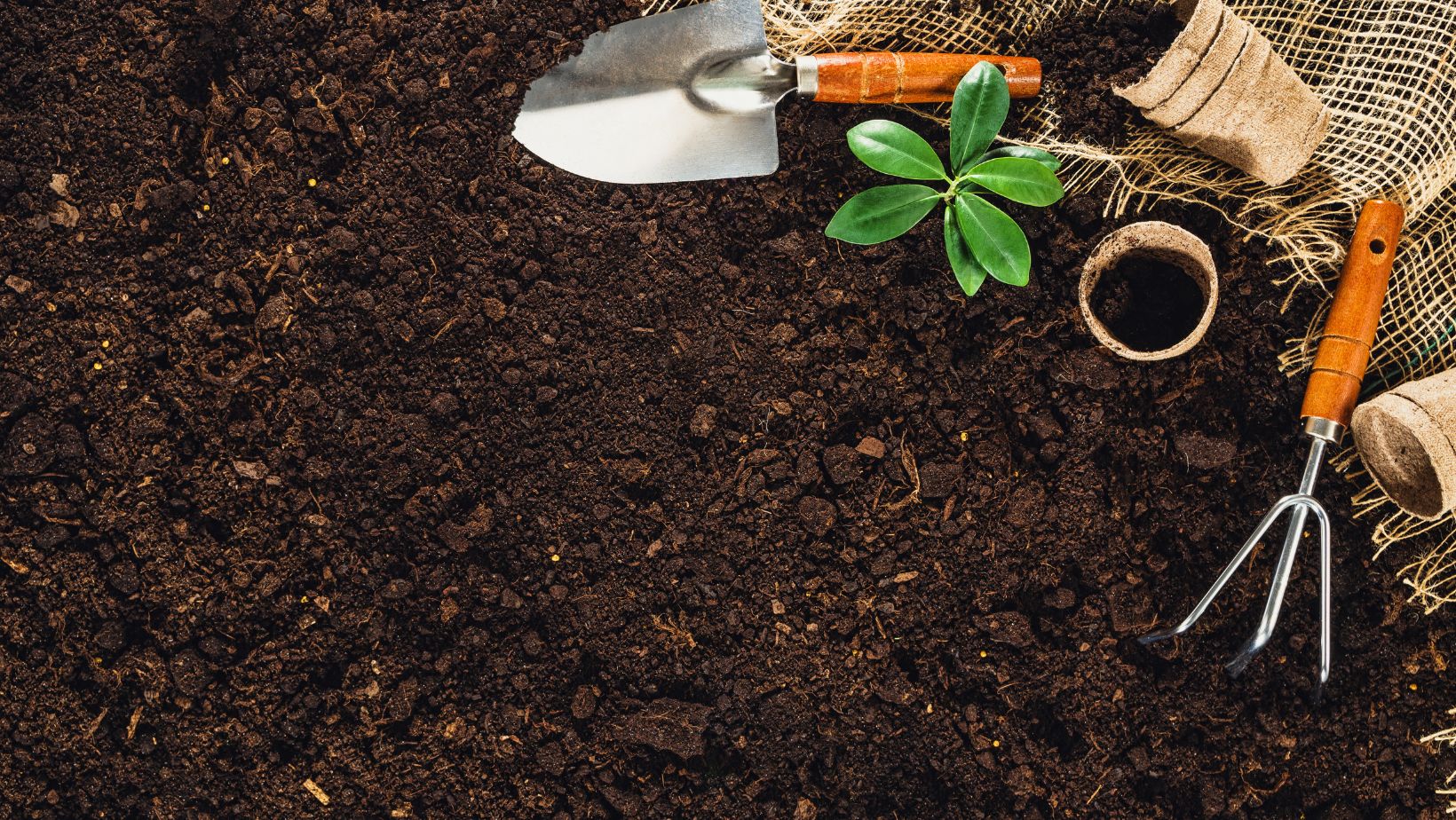As a passionate floral gardening expert in USDA Zone 9, I’ve discovered the incredible advantages of growing plants in this warm and forgiving climate. With our extended growing season and mild winters that rarely dip below 20°F (-6.7°C), I’m able to cultivate an impressive variety of plants throughout the year.
I’ve learned that Zone 9 gardening offers unique opportunities for both experienced and novice gardeners. From tropical plants to hardy vegetables, this climate zone supports diverse growing options that many other regions can’t sustain. After years of experimenting in my own garden, I’ve found that understanding the specific characteristics of Zone 9 is crucial for achieving gardening success and maximizing your growing potential.
Key Takeaways
- Zone 9 offers an extended growing season of 270-290 days with winter temperatures rarely dropping below 20°F (-6.7°C), making it ideal for year-round gardening
- The climate supports diverse plant varieties, from tropical species to cold-hardy vegetables, with optimal growing temperatures between 70-85°F (21-29°C) in spring/fall
- Strategic planting schedules are crucial – warm-season crops like tomatoes start in January-March, while cool-season vegetables thrive when planted September through January
- Proper maintenance includes early morning watering, consistent pest monitoring, and using protective measures like shade cloth in summer and frost blankets in winter
- The region’s unique weather patterns require adapting to both dry summers and winter rainfall, with annual precipitation averaging 15-45 inches
Zone 9 Gardening
Zone 9’s climate creates distinct growing conditions with average minimum temperatures between 20°F and 30°F (-6.7°C to -1.1°C). I’ve found these temperature patterns create unique opportunities and challenges for gardening success in this region.
Temperature Range and Growing Season
The growing season in Zone 9 spans 270-290 days, offering extended cultivation periods for diverse plant varieties. Daytime temperatures reach 70°F-85°F (21°C-29°C) in spring and fall while summer temperatures climb to 90°F-100°F (32°C-37°C). Winter days maintain mild temperatures between 50°F-70°F (10°C-21°C), enabling year-round growing of cold-hardy plants like kale, Swiss chard, and collard greens.
| Season | Temperature Range |
|---|---|
| Summer | 90°F-100°F (32°C-37°C) |
| Winter | 50°F-70°F (10°C-21°C) |
| Spring/Fall | 70°F-85°F (21°C-29°C) |
Frost Dates and Weather Patterns
Zone 9’s last frost typically occurs in early February with first frost arriving in mid-December. The region experiences:
- Rainfall concentration in winter months averaging 15-45 inches annually
- Dry summer conditions requiring consistent irrigation schedules
- Morning fog patterns in coastal areas affecting humidity levels
- Occasional heat waves during peak summer months
- Minimal frost events lasting 2-3 hours in early morning hours
These weather patterns create microclimates within Zone 9, particularly in areas near bodies of water or urban centers. I track local weather stations to identify frost patterns specific to my garden’s location, ensuring protection for sensitive plants during occasional cold snaps.
Best Plants for Zone 9 Gardens
 Zone 9’s extended growing season creates ideal conditions for an extensive variety of plants. Here’s my comprehensive guide to the most successful plants I’ve grown in this climate zone, categorized by type.
Zone 9’s extended growing season creates ideal conditions for an extensive variety of plants. Here’s my comprehensive guide to the most successful plants I’ve grown in this climate zone, categorized by type.
Vegetables That Thrive in Zone 9
Zone 9 vegetable gardens produce multiple harvests throughout the year. I plant these proven performers:
- Start tomatoes in January for summer harvests
- Plant peppers from February through March
- Grow eggplants from March through August
- Sow lettuce seeds in September for winter crops
- Plant broccoli seedlings in October
- Cultivate year-round herbs like basil, oregano, thyme
Optimal Flowers and Ornamentals
These flowering plants demonstrate exceptional performance in Zone 9 conditions:
- Plant Lantana for continuous summer blooming
- Grow Salvias for drought-resistant color
- Include Bougainvillea on trellises or fences
- Add Plumbago for reliable blue flowers
- Plant Hibiscus for tropical appeal
- Incorporate native wildflowers like Black-Eyed Susan
- Citrus trees: lemons, limes, oranges
- Stone fruits: peaches, plums, nectarines
- Fig trees for spring and fall harvests
- Blueberry bushes (Southern Highbush varieties)
- Blackberry vines along fences
- Strawberry plants for spring production
| Plant Type | Planting Time | Harvest Season |
|---|---|---|
| Tomatoes | January-March | May-September |
| Citrus | March-April | November-February |
| Berries | October-November | April-June |
| Herbs | Year-round | Year-round |
Seasonal Planting Guide
Zone 9’s extended growing season enables multiple planting cycles throughout the year. I’ve developed this comprehensive guide based on optimal planting times for different crops to maximize yield potential.
Spring Planting Schedule
In early spring (February-March), I plant warm-season vegetables when soil temperatures reach 60°F (15.5°C):
| Crop | Planting Time | Soil Temperature |
|---|---|---|
| Tomatoes | Feb 15-Mar 15 | 60-65°F |
| Peppers | Mar 1-Mar 30 | 65-70°F |
| Cucumbers | Mar 15-Apr 15 | 65-70°F |
| Green Beans | Mar 1-Apr 30 | 60-70°F |
I start these heat-loving crops:
- Plant summer squash seeds directly in prepared beds
- Transplant eggplant seedlings into rich organic soil
- Sow okra seeds 1 inch deep in full-sun locations
- Set sweet potato slips 12 inches apart in rows
Fall and Winter Growing Options
Zone 9’s mild winters create ideal conditions for cool-season crops from September through January:
| Crop | Planting Time | Harvest Window |
|---|---|---|
| Lettuce | Sep 15-Nov 15 | 45-60 days |
| Broccoli | Sep 1-Oct 15 | 60-90 days |
| Carrots | Sep 15-Nov 30 | 70-80 days |
| Peas | Oct 1-Nov 30 | 60-70 days |
- Sow spinach seeds every 2 weeks for continuous harvests
- Plant garlic cloves 4 inches deep in October
- Transplant cabbage seedlings 18 inches apart
- Direct seed root vegetables like turnips beets in prepared beds
Garden Maintenance Tips
Zone 9’s extended growing season requires specific maintenance strategies to ensure optimal plant growth. I’ve developed these techniques through years of gardening in this climate zone.
Watering Requirements
Zone 9’s warm temperatures demand strategic watering practices. I water deeply in the early morning hours between 5-7 AM to minimize evaporation while allowing plants to absorb moisture before peak heat. Here’s my proven watering schedule:
- Container plants: Daily watering in summer months at 1-inch depth
- Established perennials: 2-3 times weekly at 2-inch depth
- Trees shrubs: Weekly deep watering at 4-inch depth
- Winter vegetables: Every 3-4 days at 1.5-inch depth
I use drip irrigation systems with moisture sensors to maintain consistent soil moisture levels between 40-60%. For container gardens, I incorporate water-retaining crystals into the potting mix to reduce watering frequency by 30%.
Pest and Disease Management
Zone 9’s year-round growing conditions create unique pest management challenges. I implement these preventive measures:
- Monitor plants weekly for common pests:
- Aphids on new growth
- Spider mites during dry spells
- Whiteflies on vegetable crops
- Scale insects on citrus trees
- Space plants 12-18 inches apart for proper air circulation
- Apply organic fungicides every 14 days during humid periods
- Remove infected plant material within 24 hours
- Rotate crops annually in vegetable beds
- Maintain soil pH between 6.0-7.0 using organic amendments
| Common Zone 9 Issues | Prevention Rate | Treatment Method |
|---|---|---|
| Powdery Mildew | 85% | Neem oil spray |
| Root Rot | 90% | Improved drainage |
| Leaf Spot | 75% | Copper fungicide |
| Bacterial Wilt | 80% | Crop rotation |
Extending the Growing Season
I maximize Zone 9’s long growing season through strategic protection methods that shield plants from temperature extremes. These techniques create micro-environments that allow for year-round cultivation of diverse crops.
Heat Protection Strategies
I implement multiple heat protection methods to maintain optimal growing conditions during intense summer temperatures:
- Install 30-40% shade cloth over sensitive plants like lettuce spinach tomatoes
- Mulch beds with 2-3 inches of organic material to retain soil moisture
- Set up misting systems that activate when temperatures exceed 90°F
- Plant tall crops like corn sunflowers to create natural shade barriers
- Use light-colored row covers to reflect excess heat
- Position container gardens on rolling platforms to relocate during peak heat
Cold Weather Protection Methods
I employ several protective measures during occasional cold snaps to prevent frost damage:
- Cover plants with frost blankets rated for 28°F protection
- Install cold frames with 6mm polycarbonate panels
- Place water-filled containers near plants to release stored heat
- Add 3-4 inches of straw mulch around root zones
- Use plastic tunnel systems measuring 3 feet high 4 feet wide
- Set up outdoor heating cables in raised beds maintaining 45°F soil temperature
- Position protective structures on south-facing areas for maximum sun exposure
| Protection Method | Temperature Range | Best Used For |
|---|---|---|
| Shade Cloth | 85-95°F | Leafy Greens |
| Row Covers | 28-32°F | Root Vegetables |
| Cold Frames | 25-35°F | Spring Seedlings |
| High Tunnels | 30-40°F | Winter Crops |
Possibilities for All Gardeners
Zone 9 gardening offers endless possibilities for both novice and experienced gardeners. I’ve found that success in this climate comes from understanding its unique characteristics and embracing the extended growing season.
With proper planning protection methods and plant selection I’ve been able to maintain a thriving garden year-round. The mild winters and long growing season make Zone 9 an ideal environment for a diverse range of plants from tropical varieties to hardy vegetables.
I encourage you to start small experiment with different plants and adapt these guidelines to your specific microclimate. Whether you’re growing fruits vegetables or ornamentals Zone 9’s favorable conditions will help you create a beautiful and productive garden space.
